the EPOXI Mission
R. K. Barry (Richard.K.Barry@nasa.gov, NASA/Goddard Space Flight Center, Greenbelt, MD 20771)
ABSTRACT
The Extrasolar Planet Observation Characterization and the Deep Impact Extended Investigation missions (EPOXI) are currently observing the transits of exoplanets, a comet nucleus at short range, and Earth using the High Resolution Instrument (HRI) - a 0.3 m f/35 telescope – on the Deep Impact flyby spacecraft. The HRI is in a permanently defocused state with the instrument point of focus about 0.6 cm before the focal plane due to the use of a reference flat mirror that became a powered optic due to thermal warping during ground thermal-vacuum testing. Consequently, the point spread function (PSF) for the HRI Visible CCD (HRIV) covers approximately nine pixels FWHM and is characterized by a patch with three-fold symmetry due to the three-point support structures of the primary and secondary mirrors. The PSF is also strongly color dependent varying in shape and size with change in filtration and target color. While defocus is highly desirable for exoplanet transit observations to limit sensitivity to intra-pixel variation, it is suboptimal for observations of spatially resolved targets. Consequently, all HRIV images used in our analysis of such objects were deconvolved with an instrument PSF. The instrument PSF is also being used to optimize transit analysis. We discuss development and usage of an instrument PSF for these observations.
1. INTRODUCTION
The Extrasolar Planet Observation Characterization and the Deep Impact Extended Investigation (EPOXI) mission is the successful merging of the DIXI and EPOCh science investigations into a single affordable mission. (See Figure 1.) The goal of DIXI - the Deep Impact eXtended Investigation of comets - is to follow up on the discoveries that were made by Deep Impact at comet Tempel 1 by visiting another comet.[1] Any of these newly discovered phenomena, at a second comet, would allow us to begin to understand which characteristics comets have in common and which may be unique thus enhancing our understanding of how comets are formed and how they evolve over numerous orbits around the sun. The goal of EPOCh - the Extrasolar Planet Observations and Characterization portion of EPOXI – is to characterize the properties of giant planets known to orbit nearby bright stars.[2] The investigation measures the transit depth and duration as a planet passes in front of its host star. It also attempts to detect reflected light from the planet as they pass behind the star – the secondary eclipse. These measurements facilitate an understanding of the planet’s global heat balance, between insolation and tidal heating, and the degree to which heat is distributed by planetary winds. EPOCh also searches for rings and moons surrounding the giant planets and for terrestrial planets in these systems. Lastly, the EPOCh mission provides for observations of Earth during flybys in order to characterize its properties as related to the detection of extrasolar Earth-like planets.
All observations have been conducted using the Visible CCD (HRIV) of the High Resolution Instrument (HRI), a 0.3 m f/35 telescope on the Deep Impact probe.[3] The HRI is in a permanently defocused state with the instrument point of focus about 0.64 cm before the focal plane due to the use of a reference flat mirror that became a powered optic due to thermal warping during ground thermal-vacuum testing.[4] Consequently, the point spread function (PSF) covers
approximately nine pixels full-width at half-maximum (FWHM) and is characterized by a patch with three-fold symmetry due to the three-point support structures of the primary and secondary mirrors. Defocus is highly desirable for exoplanet transit observations to limit sensitivity to intra-pixel variation and for observations of Earth where the resolved images are collapsed to create disk-integrated observations of Earth.
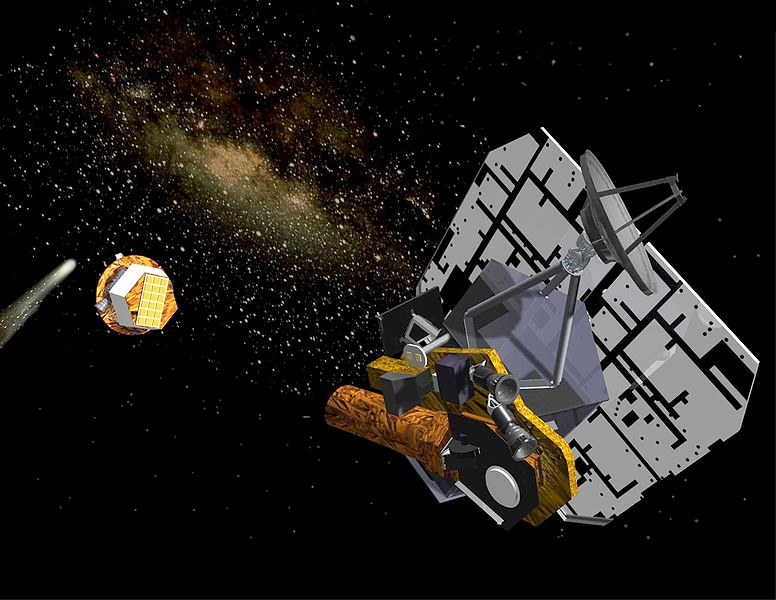
Figure 1. Deep Impact spacecraft releasing its penetrator probe towards comet Tempel 1. The High Resolution Camera is the large-aperture instrument seen in the bottom foreground directed toward the comet and penetrator.
Permanent defocus is suboptimal for observations of spatially resolved targets. It is also problematic to repeatably locate the exact center of a blurry patch for the conduct of precision aperture photometry. As a result, all resolved images used in our analysis required deconvolution with an appropriate instrument PSF.[5] For exoplanet transit photometry, we were required to locate the center of each roughly toroidal stellar image to a small fraction of a pixel before setting the photometric aperture. The solution to both of these problems is the derivation of an instrument PSF. We accomplished this using a drizzle algorithm and isophote fitting routines developed specifically for the task for each stellar target and for two calibrator stars through a number of color filters. We here describe these processes and how we utilized the PSFs to work with the data obtained with the EPOXI mission.[6]
2. THE POINT SPREAD FUNCTION
2.1 Development of the Point Spread Function
An instrument PSF was developed for each calibrator star and EPOCh stellar target, except WASP-3, in the following way. Images of the star were read into a process that first located the star in the field using median profiles. If the star was too close to the edge of the frame or was smeared by spacecraft motion during the exposure, the image was rejected. The images were then processed using a 7x7, 4-σ filter to remove cosmic rays, apodized by a truncated, normalized Gaussian and loaded onto a stack. Once all of the calibrator images for a particular filter were loaded, a total value of all pixels in the image was computed for each and a final cut made using the statistics of the sample to remove images with excessive noise. The resulting cleaned calibrator cube was then accessed one image at a time and the star’s position automatically calculated to very high precision (1/10,000th pixel) by fitting an elliptical isophote. As many as 1300 images were then sequentially co-registered and added using a Drizzle process[7] for each filter and each calibrator. The end result was a complete set of 600x600 pixel PSFs that we archived with the data. These would then typically be resampled (down-binned using Rebin with /Sample flag set in IDL, for example) to 60x60 for further use. Figure 2 depicts an individual image of a target star and a PSF resulting from this process.
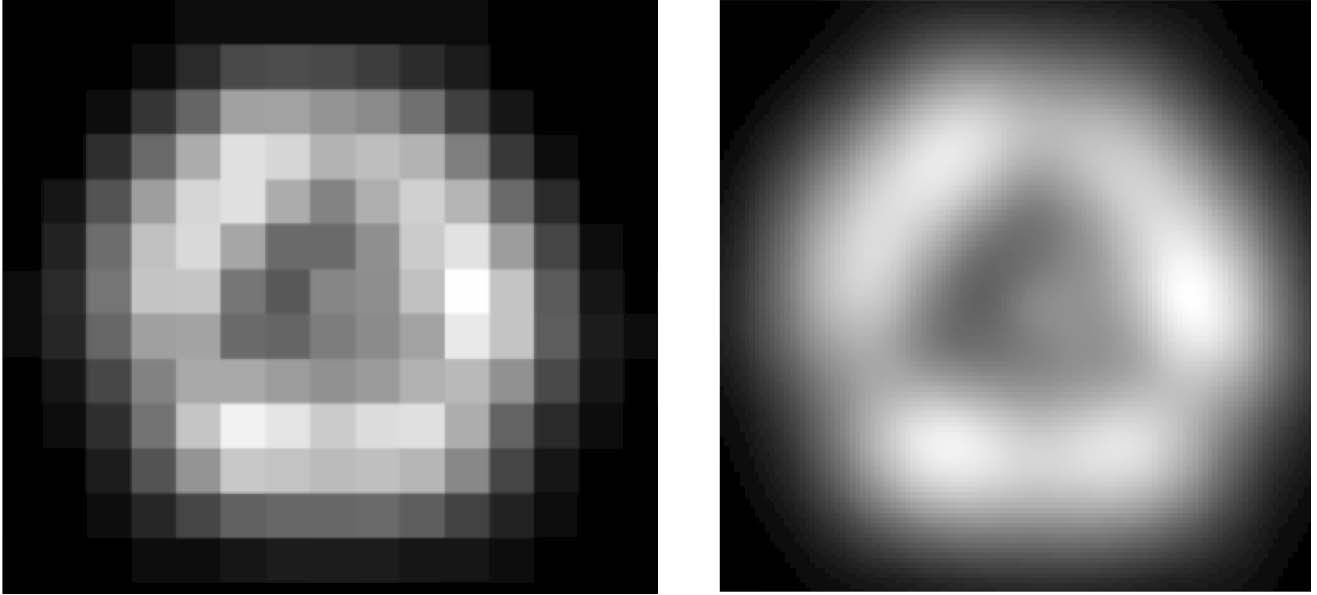
Figure 2. Left: Example initial CLEAR-6 filtered image of target star. Right: PSF of same CLEAR-6 filtered target star utilizing 1036 individual images processed as described in text. The Clear-6 filters are uncoated fused silica with no band limiting longwards of 700 nm.
The original Deep Impact mission provided for data compression from sixteen to eight bits to conserve on-board memory during the flyby of comet Tempel 1. This mode was found to produce significant errors in image reconstruction and forced a modification to the Richardson-Lucy algorithm to handle them in the prime mission[5]. To eliminate this problem data compression mode was not used for the EPOCh observations of transit targets and Earth.
During this process we used the Drizzle algorithm. Although Drizzle is described elsewhere more thoroughly, we include a brief, schematic description of this process here for completeness and so that the end user may utilize the PSFs with at least a beginning understanding of their genesis and limitations.
Why is any process necessary to retrieve a PSF? Why Drizzle? When the distribution of light on the sky, T, is observed by any instrument, the observed intensity, I, is the convolution of T with the point spread function of the optics, O, and the electronic pixel, E. The point spread function of the optics includes geometric aberrations, and, in the case of the HRI, permanent defocus. While the physical pixels in the HRI detector array are square and uniform the electronic pixel, E, is not. Due to scattering of light and charge carriers the electronic pixel may be modeled as a Gaussian kernel. We then wish to co-add many images to lessen the effect of local detector defects, CR events, or optics geometry by any one image. While a simple shift-and-add algorithm can easily handle slow dithers as experienced in the EPOXI mission as a result of pointing drift, shift-and-add convolves the image with the original physical pixel, P, again when the image is shifted over and added to the final image. As images are co-added to the final, output grid, G, there is another convolution. Because convolutions add approximately as the sum of squares, the result of these five convolutions, I = T⊗O⊗E⊗P⊗G, is a highly degraded image. The Drizzle algorithm, as we have implemented it for this experiment, has a very fine output grid, G, models the electronic pixel, E, as a Gaussian, and does not re-convolve the input image with the physical pixel, P, as does shift-and-add. Because of this and the fact that convolution with a Gaussian is a Gaussian, the output image, the result of Drizzling up to 1300 input images onto a fine grid, is of much higher-fidelity to I = T⊗O. The final product, I, is then the point spread function – the response of the optics to a point-like light intensity distribution - of the instrument. The final product, I, then becomes the input PSF, Oi, for processing of science images. It may be used to deconvolve science images, I = T⊗Oi, to obtain T, the distribution of light on the sky.
Drizzle has several advantages over shift-and-add. It can handle images with arbitrary shifts, rotations, and geometric distortions. It also naturally handles missing data from sources such as the HRIV CCD inter-chip boundaries, CR events, and bad pixels. We note that Drizzle does these things more effectively when a large number of input images are used. Because observations of targets and calibrators were not deliberately dithered and the number of input images were not consistently large, we pre-processed the input images – conducting first-order CR removal on all images and removing any that were smeared or too noisy prior to the Drizzle process. In this way, we are confident that all PSFs in the archive are clean and highly flat-fielded and may be used for further processing of science images.
Importantly, the Drizzle process is specifically designed to conserve both absolute surface and point-source flux. Post processing of images by deconvolving with these PSFs also allows much more precise centering of a photometric aperture around an area of interest. These facts strongly suggest that HRVI science images deconvolved using these PSFs will provide photometric accuracy. The usual exception is that one should not apply deconvolution near the boundaries of the images as sharp edges typically produce artifacts under Fourier transformation.
Dithering – deliberately changing pointing between individual observations – was not used for EPOXI. While dithering enables recovery of the PSF with better spatial sampling and less influence of the response of any particular pixel on the photometry and is strongly advised for observations for which drizzle post-processing is intended, spacecraft motion due to pointing error alone provided sufficient dither in most cases. For several of the PSFs produced for this mission there was insufficient dither resulting in a striped or somewhat granular rasterized PSF. (See Figure 3.) This effect is greatly exacerbated under the circumstance of having relatively few input images to the drizzle process. Extreme care must be observed when using rasterized PSFs. They should be re-binned to the pixel size of the target image using averaging rather than sampling.
The drizzle process can be adjusted to partially correct for PSF rasterization due to low numbers of input images and for insufficiency of dither. While simple shift-and-add algorithms convolve the result with the input pixel footprint, the effect may be minimized by adjusting the ‘pixfrac’ parameter in the drizzle algorithm. Pixfrac, defined as virtual pixel size divided by the input pixel size, can be changed to adjust the spread of the input images as they are drizzled onto the PSF as it is constructed. In the example shown in Figure 3, Pixfrac was increased to 0.9 to reduce the amount of striping caused by insufficient input image numbers for 16CygA.
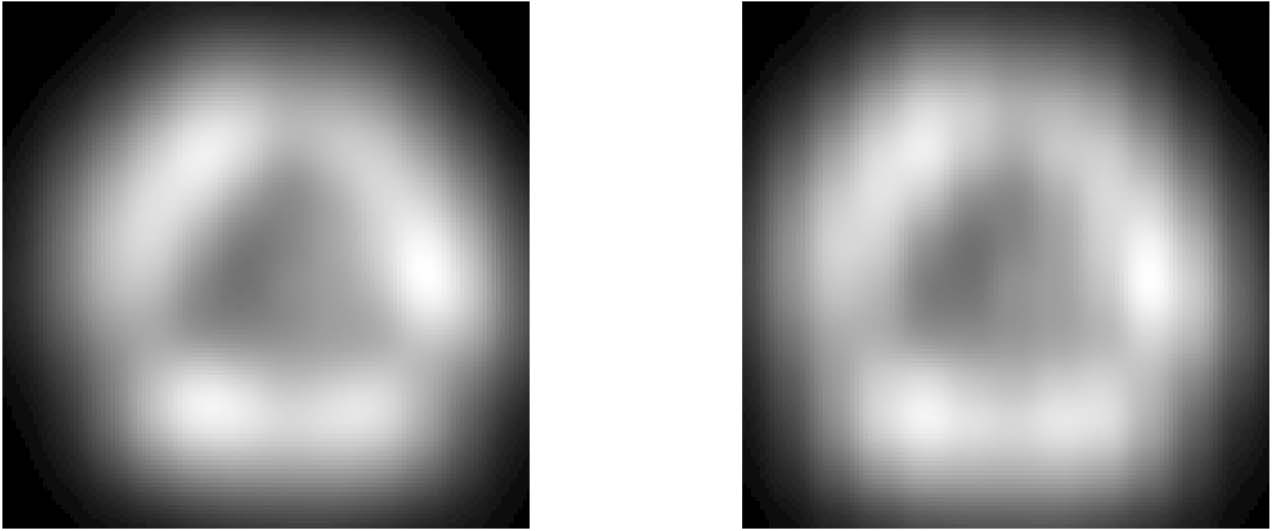
Figure 3. Two PSFs showing the effect of sufficient and insufficient dither and input image numbers. The Clear-6 filtered PSF on the left, of the target star TRES-3, was constructed from 1001 images, pixfrac 0.8. Images were collected while pointing ranged over most of the detector area. The Clear-6 filtered PSF on the right, 16CygA, was constructed from 17 input images, pixfrac 0.9. Both PSFs were constructed from images taken through the same broadband ‘clear’ filter.
2.2 Color Dependency of the PSF
During processing we noted that the shape of the PSF was strongly color dependent in spite of the fact that most of the optics in the camera are non-transmissive. Figure 4 illustrates the effect of differences in color of the target star. In this case the left-most image is the PSF of a yellow F8 dwarf star while the image on the right is a PSF of a very red M2.5 dwarf. Figure 5 shows how changes in the filtration band can have a similar strong effect. In this case we produced the PSFs for several different color filters for the calibrator stars Canopus and Achernar because the appropriate data were available. In utilizing these PSFs it is important to be aware of this color dependency. Deconvolution of Earth observations, described below, is an example of this.
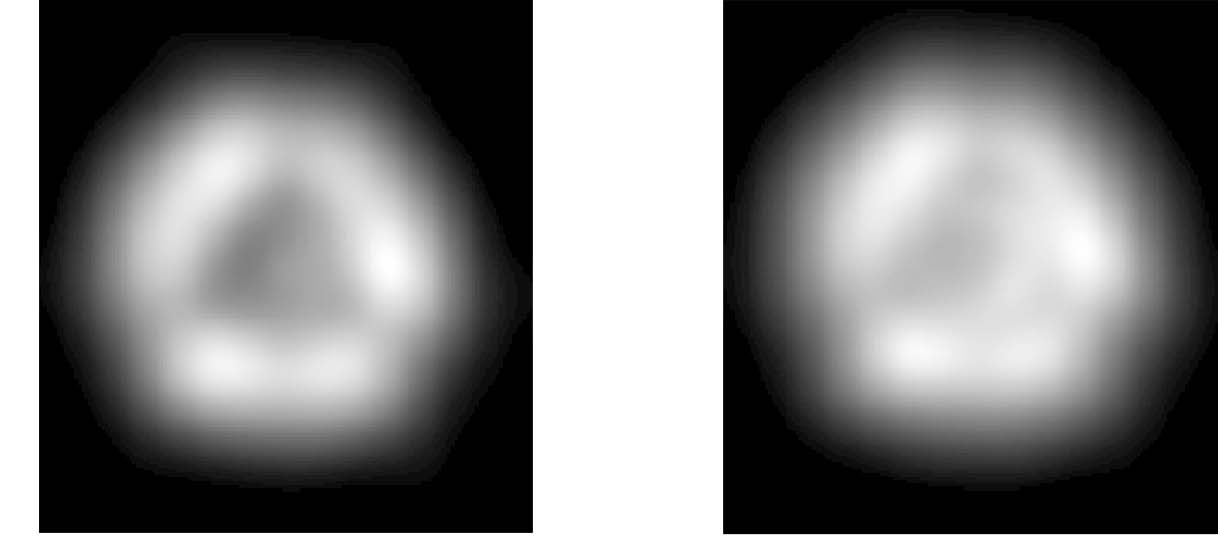
Figure 4. Example of strong source color dependency on the shape of their non-color filtered PSF. F8V target star HAT-P-7 is shown on the left while M2.5V target GJ436 is shown on the right. Both objects are host to at least one exoplanet.

Figure 5. PSF of the calibrator star Canopus showing the effect of changing the color filtration. From top left to bottom right, reading rows, filter colors are: violet, blue, green, orange, red, NIR, IR and Clear6, a broadband ‘clear’ filter. This illustrates the very strong color dependency of the PSF.
3. UTILIZATION OF THE POINT SPREAD FUNCTION
The PSFs with explanatory header files and documentation have now been archived with the data as FITS files at the Mission Archive at Space Telescope Science Institute (MAST), and as PDS-labeled FITS files in the Planetary Data System, Small Bodies Node (PDS-SBN) at the University of Maryland. The PSFs have already found use in a number of different areas of research. In particular, Earth observations have benefited from their use. Specifically, we have post-processed Earth images using deconvolution algorithms explored by Lindler, et al.[5]. The authors compared the use of four different deconvolution algorithms in attempting to obtain optimal images of the comet Tempel 1 including Richardson-Lucy, Maximum Correlation Method, Constrained Least Squares Minimum Norm and Constrained Least
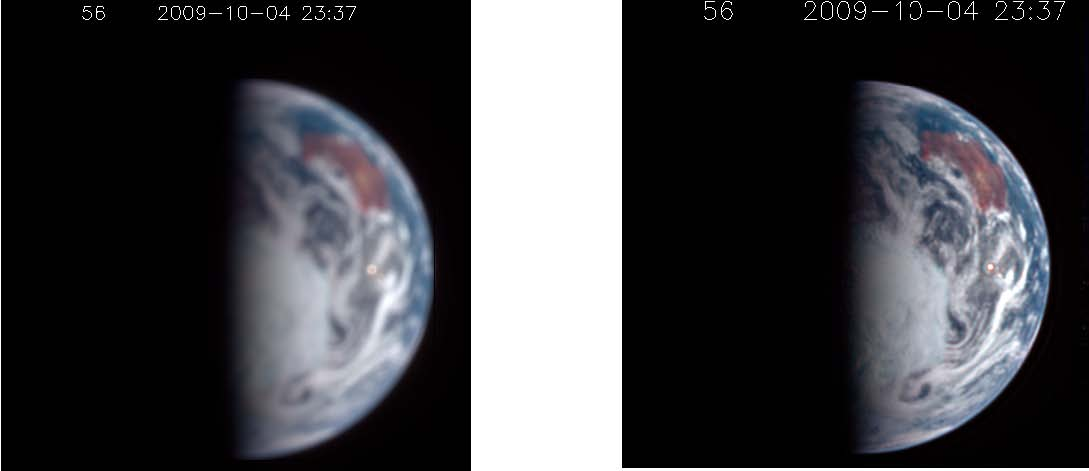
Figure 6. Images of Earth before and after deconvolution with appropriate PSFs. The image on the right was constructed of individual violet, blue, green, orange, red, NIR, IR filtered images each of which was deconvolved with the appropriate filtered calibrator PSF. Processed images were then registered and added. Note the glint of the sun in the center right of the illuminated hemisphere.
Squares Differencing. While these were all found to give similar results, Richardson-Lucy was chosen, and we used this same process to deconvolve our Earth observations with the corresponding Achernar calibrator PSF for the same filter. Offsets between the images were computed using two dimensional cross correlation. Composite color images were constructed by registering the images taken with the blue, green, and NIR filters and displaying them as a pseudo color image. (See Figure 6.) These images are being used to analyze the specular glint associated with either reflection from water surfaces or ‘anti-Sun’ reflection from high cirrus clouds and to assess the astronomical color of Earth[8].
A second use for the PSFs is for deconvolving the images taken of dense stellar fields in the search for new planet detections. The approach uses microlensing of the stellar light by the intervening mass of the planet and resulting gravitational warping of space. For this particular experiment the color and shape of the PSF is of critical importance. As a result, we are producing specialty PSFs by combining individual PSFs of differing color based on the color of the target star. This is done using elliptical isophote fitting and shift-adding the necessary PSFs.
Another use of these PSFs is image cleaning including removal of CR events and flat fielding blemishes from individual images and for modeling of the 1/3 pixel gap between chips in the HRIV CCD detector array. While significant spacecraft motion due to pointing errors made it impossible to take image pairs for CR removal, we were able to use the normalized PSF for this purpose. Any residual CR flux or flat-field blemishes in a post-processed image would leave obvious circular artifacts in deconvolved images. As a result, we were able to bootstrap calibrate our CR removal process. The PSFs were also successfully used to identify contaminated pixels for the purpose of optimizing the time series scatter in transit photometry.
REFERENCES
- Wellnitz, D. D., Feaga, L. M., A'Hearn, M. F., & EPOXI Team (2007) {EPOXI: EPOCh+DIXI, The Deep Impact Extended Investigation Of Comets}. DPS Meeting #39, #21.06, Bulletin of the American Astronomical Society, Vol. 39, 450-+.
- Deming, D. & EPOCh Science Team (2008) {The EPOXI/EPOCh Investigation of Transiting Extrasolar Planets}. DPS Meeting #40, #11.16, Bulletin of the American Astronomical Society, Vol. 40, 404-+.
- Hampton, D. L., Baer, J. W., Huisjen, M. A., Varner, C. C., Delamere, A., Wellnitz, D. D., A'Hearn, M. F., & Klaasen, K. P. (2005) {An Overview of the Instrument Suite for the Deep Impact Mission}. Space Science Reviews, 117, 43-93.
- Klaasen, K. P., A'Hearn, M. F., Baca, M., Delamere, A., Desnoyer, M., Farnham, T., Groussin, O., Hampton, D., Ipatov, S., Li J, Lisse, C., Mastrodemos, N., McLuaghlin, S., Sunshine, J., Thomas, P., & Wellnitz, D. (2008) {Deep Impact Instrument Calibration}. Rev. Sci. Instrum., 79, 091301.
- Lindler, D., Busko, I., A'Hearn, M. F., & White, R. L. (2007) {Restoration of Images of Comet 9P/Tempel 1 Taken with the Deep Impact High Resolution Instrument}. PASP, 119, 427-436.
- Barry, R. K. (2010) {Development and Utilization of the Point Spread Function for the Extrasolar Planet Observation and Characterization/Deep Impact Extended Investigation EPOXI Mission}. Space Telescopes and Instrumentation 2010: Optical, Infrared, and Milllimeter, Proceedings of SPIE, Vol. 7731.
- Fruchter, A. S. & Hook, R. N. (2002) {Drizzle: A Method for the Linear Reconstruction of Undersampled Images}. PASP, 114, 144-152.
- Hewagama, T., A'Hearn, M. F., Deming, D., Charbonneau, D., Lisse, C. M., Livengood, T. A., McFadden, L. A., Meadows, V. S., Seager, S., Wellnitz, D. D., & EPOXI-EPOCh Science Team (2008) {The Astronomical Color of Earth from EPOXI Observations}. DPS Meeting #40, #11.17, Bulletin of the American Astronomical Society 40, 404-+.